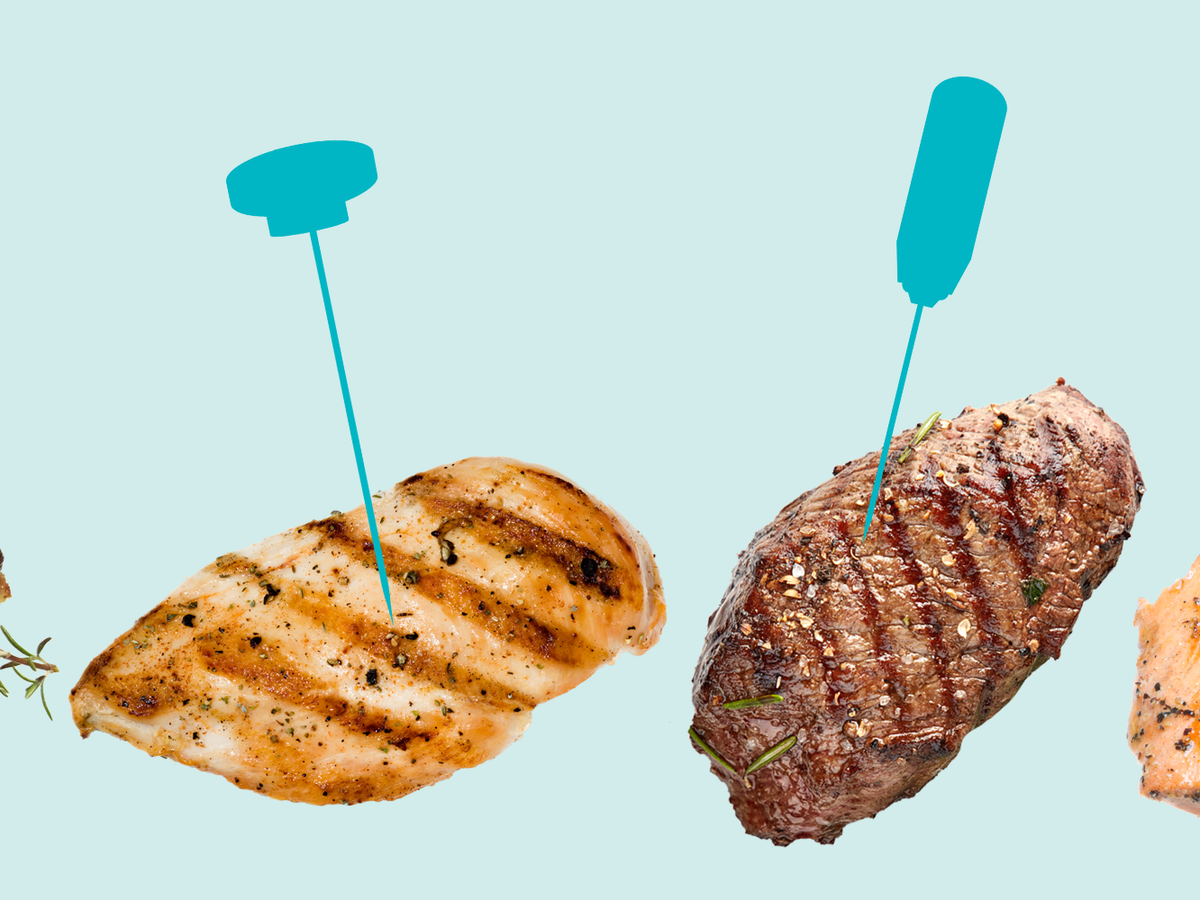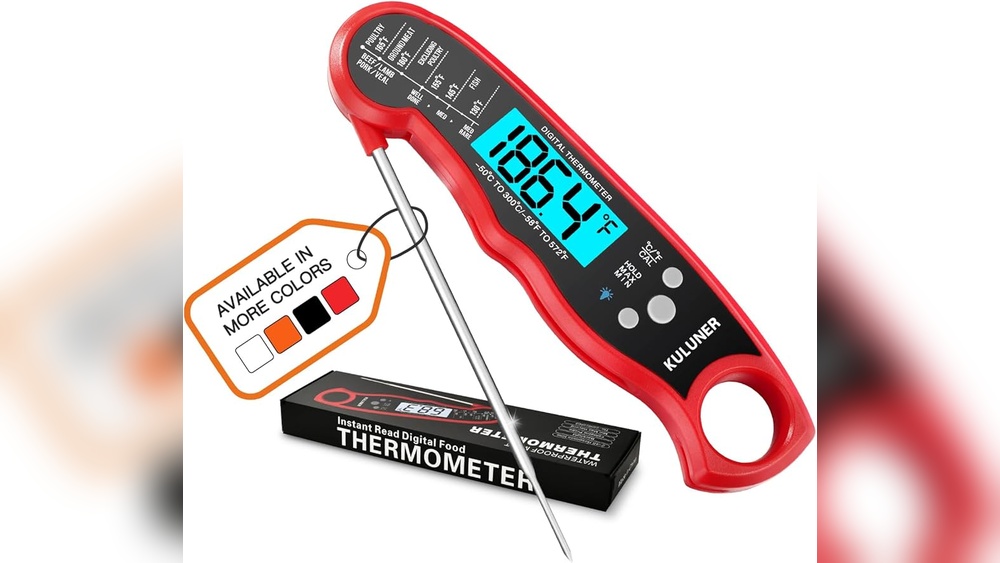Are you tired of guessing whether your steak is perfectly cooked or still underdone? Knowing the exact temperature of your meat can make all the difference between a juicy, tender bite and a dry, overcooked meal.
That’s where digital meat thermometers come in. But have you ever wondered how these handy gadgets actually work? Understanding the science behind digital meat thermometers can help you trust their readings and cook with confidence every time. You’ll discover the simple yet clever technology inside these devices, how they turn heat into clear numbers, and tips to use them like a pro.
Keep reading to unlock the secret to perfectly cooked meat every time you fire up your grill or oven!
Digital Thermometer Basics
Digital meat thermometers use modern technology to give quick and accurate temperature readings. These devices consist of different parts that work together to measure heat and show the temperature on a screen. Understanding the basics helps you use them better and cook food safely.
Sensor Types
Two main sensors are used in digital meat thermometers: thermocouples and thermistors. Thermocouples have two metal wires joined at the tip. When heated, they create a tiny electric voltage. This voltage tells the thermometer the temperature. Thermocouples give fast and precise readings.
Thermistors work differently. They measure how much electrical resistance changes as the temperature changes. Thermistors are slower but good for continuous temperature checks. They stay inside the meat for longer monitoring.
Heat To Signal Conversion
When the thermometer probe touches the meat, the sensor detects heat. It changes this heat into an electric signal. This signal is usually analog, meaning it varies continuously with temperature.
A small computer inside the thermometer, called a microcontroller, converts this analog signal into a digital number. This process is called analog-to-digital conversion. It allows the thermometer to show exact temperature numbers.
Display Mechanism
The digital number from the microcontroller goes to the thermometer’s screen. Most digital thermometers use a Liquid Crystal Display (LCD). The LCD shows clear numbers that are easy to read.
This display helps cooks check the meat’s internal temperature quickly. It removes guesswork and makes cooking safer and more precise.

Credit: www.amazon.com
Thermocouple Sensors
Thermocouple sensors play a key role in many digital meat thermometers. These sensors use two different metals joined at one end. When heated, they produce a tiny electrical voltage. This voltage changes with temperature and helps the thermometer measure heat quickly and accurately.
Thermocouple sensors are popular for instant-read thermometers. They respond fast to temperature changes. This makes them ideal for cooks who want quick, reliable readings while grilling or roasting.
Working Principle
Thermocouples generate voltage from heat differences between two metal wires. The joined tip, called the junction, senses the temperature. The other ends of the wires stay at a known reference temperature. The voltage created depends on the heat at the junction. This small voltage is sent to the thermometer’s processor. The device converts it into a temperature value shown on the display.
Instant Read Advantages
Thermocouple sensors provide very fast temperature readings. They can detect changes in just a few seconds. This speed helps avoid overcooking or undercooking meat. The sensors are also very accurate across a wide temperature range. Their thin probe tips cause minimal damage to the meat. This keeps juices inside and preserves flavor.
Thermistor Sensors
Thermistor sensors are key components in many digital meat thermometers. They detect temperature changes by measuring how their electrical resistance varies with heat. This simple but effective method allows thermistors to provide accurate and continuous temperature readings. Their design makes them ideal for monitoring meat as it cooks, ensuring it reaches the perfect temperature.
Resistance Change And Temperature
Thermistors work by changing their resistance when heated. Resistance is how much a material resists electrical current flow. As temperature rises, the thermistor’s resistance shifts in a predictable way. The thermometer measures this change and converts it to a temperature value. This method offers precise temperature tracking over time.
Continuous Monitoring Benefits
Thermistor sensors allow constant temperature checks during cooking. This helps avoid overcooked or undercooked meat. Continuous data lets the thermometer alert you when the meat hits the target temperature. This feature is useful for slow cooking or smoking, where temperature control is crucial.
Microcontroller Role
The microcontroller is the brain of a digital meat thermometer. It controls how the device reads and shows the temperature. This small chip handles data from the sensor and turns it into a number you can read. Without the microcontroller, the thermometer would not work properly.
Analog-to-digital Conversion
The sensor inside the probe sends an analog signal. This signal changes with the temperature. The microcontroller uses a process called analog-to-digital conversion. It changes the analog signal into digital data. Digital data means numbers the microcontroller can understand. This step is crucial for accurate temperature readings.
Data Processing
After conversion, the microcontroller processes the digital data. It calculates the exact temperature from the numbers received. The chip also controls the display on the thermometer. It updates the screen in real-time. This lets you see the current temperature clearly. The microcontroller ensures fast and precise results every time.
Using A Digital Meat Thermometer
Using a digital meat thermometer ensures your food is cooked safely and perfectly. It provides a quick and accurate temperature reading. This tool helps avoid undercooking or overcooking meat. Understanding how to use it properly improves your cooking results.
Proper Probe Placement
Insert the probe into the thickest part of the meat. Avoid touching bone, fat, or gristle. These parts give false temperature readings. The probe should be deep enough to reach the center. This ensures you measure the true internal temperature.
Reading Stabilization
Wait a few seconds for the temperature to stabilize. The reading may jump at first but will settle quickly. Hold the probe still during this time. Remove the probe only after the number stops changing. This gives the most accurate result.
Center Temperature Checking
Check the temperature at the center for even cooking. The middle is usually the last part to cook fully. Insert the probe horizontally for large cuts of meat. For smaller pieces, use a vertical insertion. This method prevents guesswork and improves food safety.

Credit: www.youtube.com
Tips For Accurate Cooking
Accurate cooking depends on precise temperature measurements. Digital meat thermometers help achieve perfect results every time. Using these tools correctly improves food safety and taste. Follow these tips to get the best readings and cook your meat just right.
Avoiding Bone And Fat
Insert the thermometer probe into the thickest part of the meat. Avoid touching bones because they heat faster than meat. Fat heats differently and can give false readings. Check the center of the muscle for the most accurate temperature.
Instant Vs Continuous Readings
Instant-read thermometers give a quick temperature snapshot. They work well for checking doneness just before serving. Continuous-read thermometers stay inside the meat while cooking. They track temperature changes over time. Choose the type that fits your cooking style.
Timing And Temperature Checks
Check the temperature near the end of cooking but allow time for rest. Meat continues to cook after removing it from heat. Wait a few minutes before taking the final reading. This helps avoid undercooking or overcooking your food.

Credit: www.goodhousekeeping.com
Frequently Asked Questions
How Does A Digital Meat Thermometer Work?
A digital meat thermometer uses a sensor to detect heat and converts it into an electrical signal. A microcontroller processes this signal and displays the temperature digitally. Thermocouples offer fast, accurate readings, while thermistors provide continuous monitoring inside the meat.
Is A Digital Meat Thermometer Accurate?
Yes, digital meat thermometers provide accurate temperature readings when used correctly. Insert the probe into the thickest part, avoiding bone or fat. Instant-read models deliver fast, precise results, ensuring safe and perfectly cooked meat every time.
Do You Leave The Digital Thermometer In Meat While Cooking?
Yes, leave a digital meat thermometer in meat only if it’s designed for continuous monitoring during cooking. Otherwise, use instant-read types for quick checks.
How To Check If Your Meat Thermometer Is Accurate?
Fill a glass with ice and water. Insert the thermometer probe into the ice water without touching the glass. The thermometer should read 32°F (0°C) within two degrees. Adjust calibration if needed or replace the thermometer for accuracy.
Conclusion
Digital meat thermometers use sensors to measure heat quickly and accurately. They turn heat into electrical signals, which show as numbers on the screen. This helps you cook meat safely and perfectly every time. Using the probe correctly ensures precise temperature readings.
Understanding how these tools work makes cooking easier and more reliable. Keep your meals tasty and safe by checking the temperature well. Simple, fast, and effective—digital thermometers are a smart kitchen helper.

